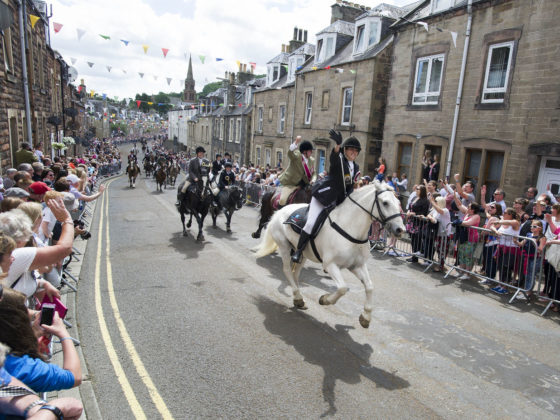LOCATED BETWEEN the border with England to the south and the city of Edinburgh to the north, the Scottish Borders and Midlothian are two of the most interesting of the country’s many regions. Here’s just a sampling of what’s going on in this part of Scotland — most of which you probably had no idea about.
1. It’s home to some of the best coastal hikes in the country.
From the village of Cockburnspath in the Scottish Borders, the Berwickshire Coastal Path follows the second highest cliffs on Britain’s east coast — past grand, weathered castles and along sandy beaches — for 28 miles to Berwick-upon-Tweed in the north of England.
It’s not just walkers you’ll see taking in the fresh North Sea air — the east coast is where you’ll spot some of Scotland’s finest seabirds, especially at St Abb’s Head National Nature Reserve. Its steep cliffs were formed by an ancient volcano and are home to razorbills, kittiwakes, and penguin-like guillemots. You may even see a circus or two of puffins.
2. The Scottish Borders textile industry put cashmere on the map.
Scotland’s modern textile industry began in the 18th century, and the Borders region was one of the world’s centers for the production of tweed, tartan, and linen. Up until recently, Scotland actually handled and processed much of the world’s cashmere as well. Pringle of Scotland, founded in the town of Hawick in 1815, established a worldwide reputation for producing luxury products like cashmere hosiery. It’s even whispered that Pringle was commissioned to make the Queen’s knickers.
Many of the mills in the Borders have closed due to a demand for cheaper, lighter, man-made fabrics. That said, today the region is still well known for producing luxurious fabrics like cashmere, merino, and lambswool for designers such as Chanel and Dior — the Textile Trail will take you to 10 of the best spots showcasing Scotland’s textiles heritage. And all those fabrics mean lots of quintessential sheep dotting quintessential Scottish countryside. Instagram, get ready.
Tip: Hawick and the historic royal burgh of Jedburgh are both great places to shop for knitwear — keep an eye out for clearance sales.
3. There’s an endless stream of castles and stately homes to visit.
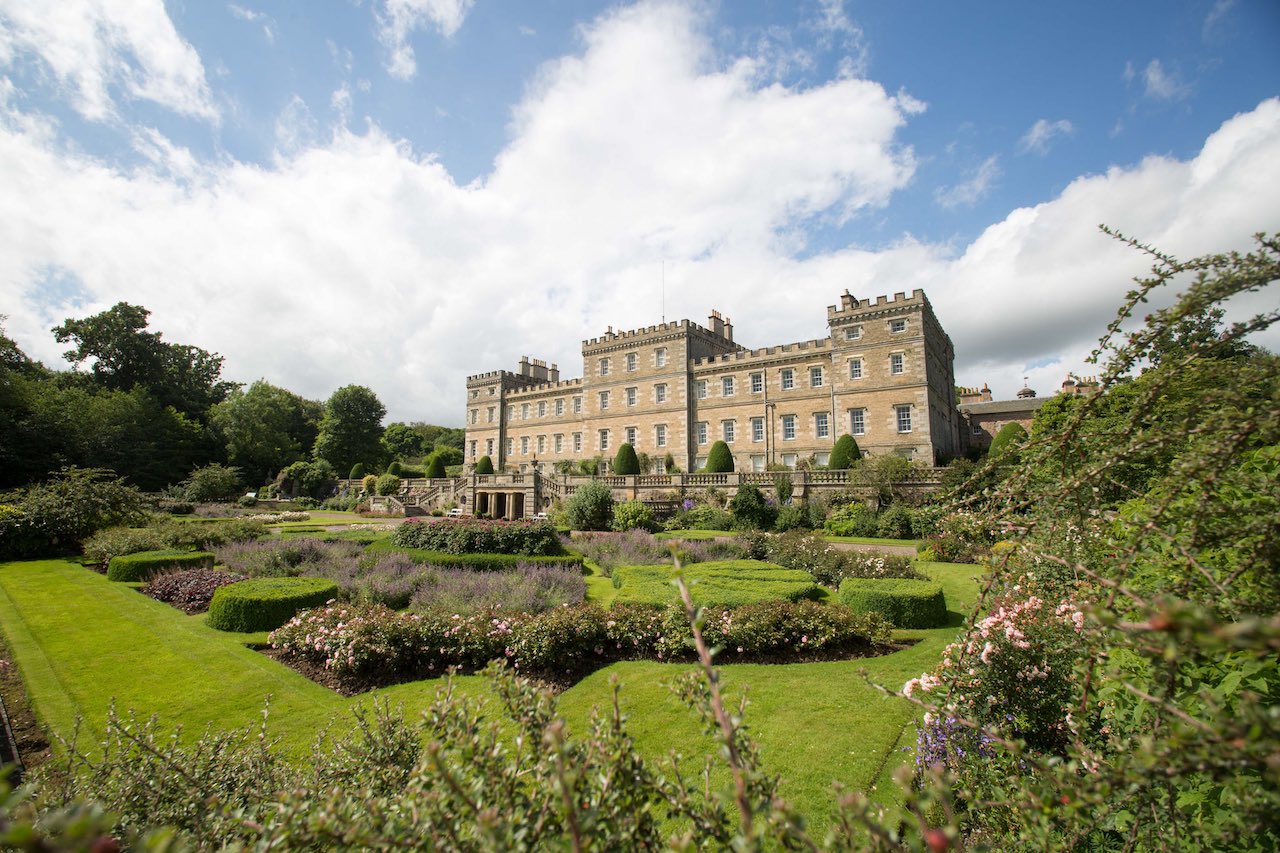
Photo: The Mellerstain Trust
There’s such an abundance of historical buildings in the region, it’d be hard not to experience some of South East Scotland’s rich history on a visit here. Take the train along the Borders Railway and check out 18th-century Mellerstain House (open for the new season in April 28, 2017) near Gordon — it’s one of Scotland’s finest stately homes and gardens and has an acclaimed art collection.
4. Scotland’s first experimental brew-it-yourself is right here.
Stewart Brewing’s craft beer kitchen, just south of Edinburgh, has finally taken craft beer to its ultimate end — brewed according to the recipe of its drinker. A visit to Stewart starts off by tasting existing local concoctions and pinpointing what flavors you’d like to replicate in your creation — unless you’ve come prepared with ideas and your own recipe, which is an option, too. But for most, a quick leaf through the recipe book is where to start, a few decisions on how to play to your tastes, and it’s off to the races.
A good beer isn’t brewed in a day, however, so boil the barley, add the hops, get your fill of the kitchen (staff-guided, of course), and move onto the tour. Sample a few more, and then start brainstorming on your unique brew’s name and label (you can pick from their template or design your own). A few weeks later, you’ll have 40 liters of beer to your name — with your name. If that’s not enough, a second visit to their growler fill station will have to do.
5. Every summer, the Scottish Borders celebrates one of the oldest — and liveliest — equestrian festivals in the world.
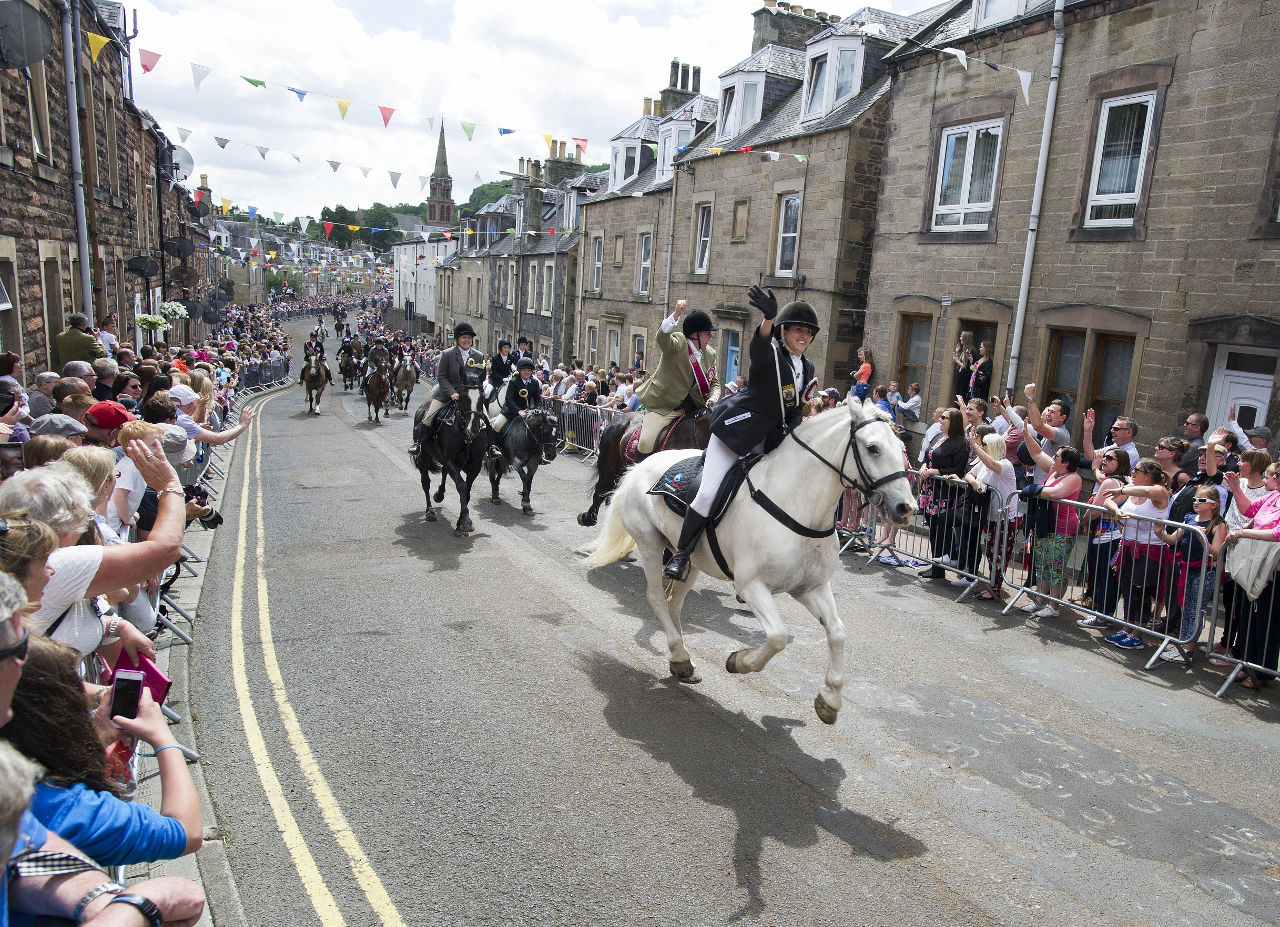
Photo: Ian Rutherford, courtesy of VisitScotland
If you’re lucky enough to be in Scotland during summer, you’ll want to celebrate one of the Common Ridings that takes place in 11 of the Scottish Border towns. Hundreds of people hop on their horses between June and August — practicing a tradition that dates to the unstable times of the 13th and 14th centuries, when the Border lands were in constant conflict. Back in those days, local lads would ride the boundaries of their towns to ward off enemies.
Described by Rough Guides as a fest that “combines the thrills of Pamplona’s Fiesta de San Fermin with the concentrated drinking of Munich’s Oktoberfest,” the towns come alive with street parties, live music, parades, and food stalls — it’s basically everything you could want in an experience that’ll transport you straight to the core of Borders culture.
6. The local seafood scene goes far beyond fish and chips.
Check out the historic harbor town of Eyemouth. Known for its haddock and herring industry, the area’s dotted with the sea caves and underground tunnels that made its port a particularly popular spot during the height of 18th-century smuggling. The town’s pubs and seafood restaurants are brilliant, too. If the sun’s shining, head to Mackays for some takeaway fish’n’chips, then sit down for dinner by the harbor and watch the local seals bask on the rocks.
Looking to whip up your own meal? Head to D.R. Collins fishmongers and grab some fresh lobster, langoustine, or fresh crab.
7. The Holy Grail is said to be locked in the vault of one of its chapels.
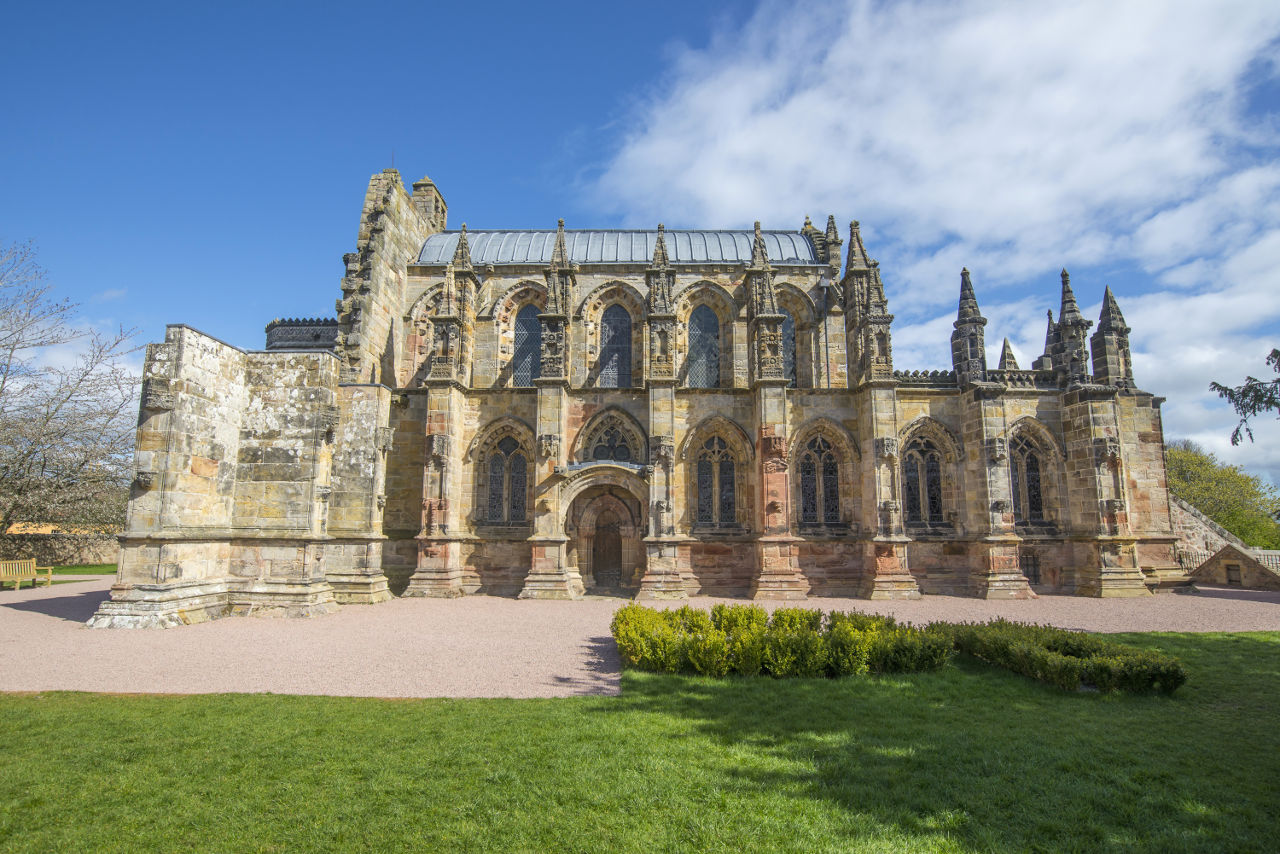
Photo: VisitScotland / Kenny Lam, all rights reserved
Rosslyn Chapel, just outside Edinburgh, is stunning from the outside, but it’s when you head through its doors that you’ll be truly awed. The intricacy of its 500-year-old carvings is incredible. Every stone pillar and wall is covered in intricate vines and flowers, angels, biblical figures, over a hundred pagan “Green Men” that apparently symbolize nature and life, and what looks like maize…carved decades before Columbus made his voyage to the New World. That’s not Rosslyn’s only mystery — there have also been numerous reported sightings of phantom monks in and around the chapel. But the cat? He’s real. That’s William the Chapel Cat.
Visitors have been coming here for centuries, but ever since Dan Brown, on writing The Da Vinci Code, decided “that its finale would have to take place at the most mysterious and magical chapel on earth — Rosslyn,” the chapel’s fate as one of the more popular places to visit in the country was sealed. Chapel guides give regular talks throughout the day. The quietest time to visit is in the morning after it’s just opened.
8. There’s a forest here that draws top mountain bikers.
An hour south of Edinburgh, in the heart of the Tweed Valley near Peebles, Glentress Forest has 50 miles of award-winning green, blue, red, and black graded trails and a brilliant multi-graded freeride area. It also hosts the Glentress Seven endurance race. One of Scotland’s renowned TweedLove mountain bike events, this seven-hour race attracts mountain bikers from around the world every May.
Stay in the nearby town of Peebles and take in — or get in on! — the action. The kind folks at Alpine Bikes in Glentress will sort you out with gear. Note: Glentress is also a short trip from Innerleithen‘s famous downhill and cross-country trails.
9. It has some of the best salmon and trout fishing on the planet.
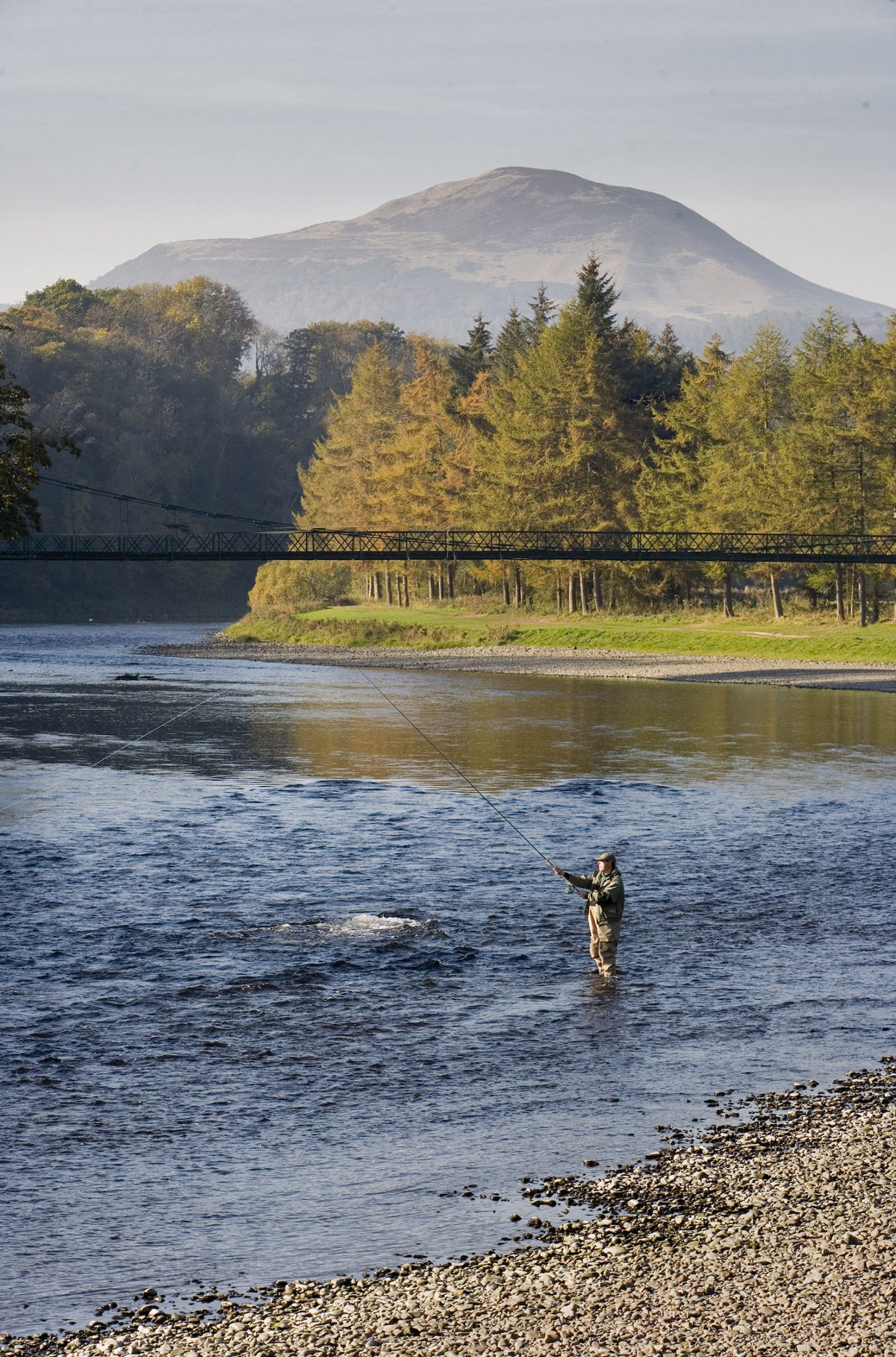
Photo: VisitScotland / Paul Tomkins, all rights reserved
From February 1 all the way to the end of November, the River Tweed’s 97-mile course is a salmon, sea trout, and brown trout hot spot. Most hotels on or around the river will help you figure out permits and guides. Base yourself in the pretty town of Kelso in Roxburghshire, where there are plenty of fly fishing shops, and where most of the hotels are fully geared up. And if fishing isn’t your thing, at least visit local favorite Teviot Smokery for their smoked trout pâté.
10. Rugby sevens originated here over a hundred years ago.
Close to the iconic Eildon Hills and only a few miles from Tweedbank railway station, the town of Melrose is the birthplace of rugby sevens (a shortened version of the game). The first tournament was played here in 1883, and every April hundreds of spectators visit to enjoy some of the world’s finest rugby. You’ll want to book your tickets and accommodation early for this one.
Melrose is worth visiting outside of the festivities, too. Twelfth-century ruin Melrose Abbey is the resting place of King Robert the Bruce of Scotland (or, at least, the resting place of his heart), and there are two gorgeous National Trust for Scotland gardens — Priorwood and Harmony Gardens. The latter hosts the Borders Book Festival every June. Running for four days, the fest attracts some of the world’s top authors — from Kate Mosse to Alexander McCall Smith — journalists, actors, and comedians, and with the new rail link from Edinburgh it’s really easy to get to. Again, grab tickets in advance for a seat at one of the many talks, performances, and panel discussions.
11. Those quintessential Scottish estates pack in more than you’d expect.
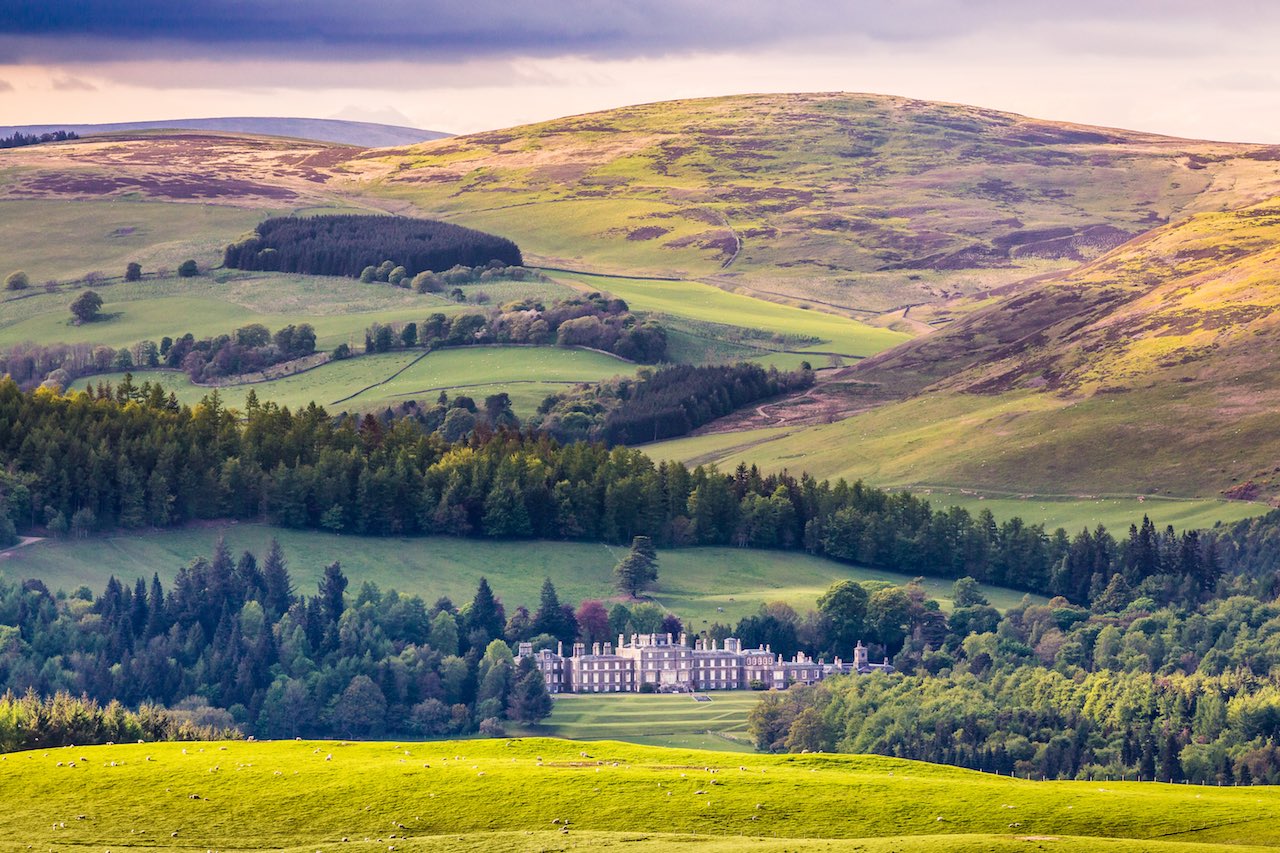
Photo: Bowhill House
Bowhill Country Estate in the Ettrick Valley has nature walks through the woods as well as ranger tours, horseback riding, an adventure playground, and an epic Land Rover experience, where you’ll get unseen views of the forest and the ruins of Newark Tower. On Sunday tours you’ll have the option of stopping on the moor for a picnic lunch and trying some Scott Whisky before heading to the next destination. Because…what estate visit is complete without Land Rovers and whisky tastings?
Traquair House, Scotland’s oldest continually inhabited house, hosts festivals, races, ghost tours, and medieval fayres. There’s also a big box hedge maze — the largest in the country — for messing around in (they actually hide 6,000 miniature eggs here at Easter), and there’s a world-class brewery onsite. Check out their homepage to find out times for brewery tours and tastings.
12. The inventor of the historical novel lived here.
You might know the Scott Monument — that grand Victorian Gothic spire shooting up from the middle of Edinburgh’s Princes Street Gardens. It is the largest monument on the planet dedicated to a writer, after all.
But Sir Walter Scott spent most of his 19th-century days at Abbotsford, his very grand ancestral home near Melrose, which is now open to the public. As you might expect of a man described as a “poet, novelist, ballad-collector, critic and man of letters” (and the guy on all the banknotes from Bank of Scotland), let’s just say his library is pretty impressive — like the more-than-9,000-volumes kind of impressive.
13. This is Scotland, which means you get to book accommodation that looks like this:

Photo: Borthwick Castle
It’s possible to book an entire castle for your exclusive use, but just staying in a room in a grand castle hotel like Dalhousie or Borthwick is pretty great. Converted farm stables, cottages, or apartments within the grounds of a country estate are also an awesome way to immerse yourself in local culture.
If you really want to feel like an aristocrat for the day, head to The Roxburghe Hotel & Golf Course near Kelso. It’s one of the finest hotels in the region.
14. And all this couldn’t be an easier day trip from Edinburgh.
For decades, visitors had to travel between Edinburgh and South East Scotland by bus or car (or thumb, one assumes). That’s no longer the case, thanks to the Borders Railway. In September 2015, passenger rail services between the capital and the lowlands were officially opened by the Queen, so now it’s easy to hop on the train at Edinburgh’s main Waverley Station and travel all the way to Tweedbank, the last stop in the Borders. And this is Scotland, so of course the scenery flying past your window is amazing.
Earlier this year, the route was even visited by one of the world’s most famous locomotives, The Flying Scotsman, the first steam train to officially reach 100mph.
Connecting transfers from stations are easy, too. This year, the railway offered two explorer bus routes, the Midlothian Explorer and the Borders Weaver, both of which are super tours with discounts to the attractions they visit, the Explorer going to the National Mining Museum Scotland, Dalkeith Country Park, Butterfly World, Rosslyn Chapel, Stewart Brewing, and Lasswade Village; the Borders Weaver route heading to the likes of Abbotsford House, Melrose Abbey, and the heart of the region — Galashiels. Hop aboard!

